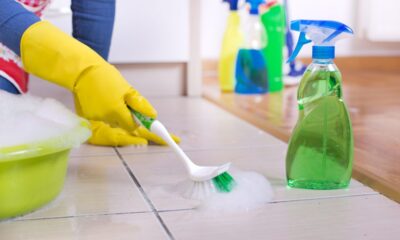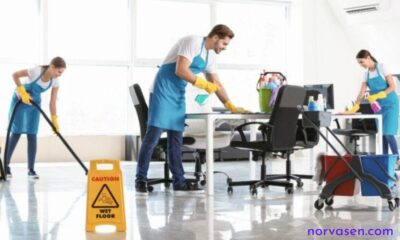Home Improvement
A Deeper Look: How Deep Cleaning Goes Beyond the Surface to Improve Home Health

Introduction: The Necessity of Deep Cleaning
While regular cleaning keeps your home tidy and presentable, it often only addresses the surface level of dirt and grime. Over time, dust, allergens, and bacteria accumulate in areas that are frequently overlooked during standard cleaning routines. Deep cleaning goes beyond the superficial, targeting these hidden areas to improve the overall health and hygiene of your living space. In this article, we will explore the benefits of deep cleaning, how it differs from regular cleaning, and why it is essential for maintaining a healthy home environment.
What Is Deep Cleaning? A Comprehensive Approach
Going Beyond the Basics
Deep cleaning is a thorough cleaning process that targets areas of your home that are not typically covered in regular cleaning routines. It involves a more detailed approach, focusing on those hard-to-reach spots, neglected corners, and areas that accumulate grime over time.
Key Differences Between Regular and Deep Cleaning:
- Surface Cleaning vs. Deep Cleaning: Regular cleaning tasks such as dusting, vacuuming, and wiping down surfaces focus on maintaining a clean appearance. Deep cleaning, on the other hand, goes beneath the surface to eliminate hidden dirt, bacteria, and allergens.
- Frequency: While regular cleaning might be done weekly or bi-weekly, deep cleaning is usually performed on a less frequent basis—typically every few months or as needed. The goal is to refresh and sanitize the home, addressing areas that aren’t regularly cleaned.
- Areas Targeted: Deep cleaning includes scrubbing behind appliances, washing baseboards, cleaning inside cabinets, and more. It’s an extensive process that covers every nook and cranny, ensuring a comprehensive clean.
Specific Areas that Benefit from Deep Cleaning
Certain areas of your home can harbor more dust and bacteria than others, making them prime candidates for deep cleaning.
Critical Areas for Deep Cleaning:
- Kitchens: The kitchen is often the heart of the home, but it can also be a breeding ground for bacteria. Deep cleaning the kitchen involves scrubbing behind and under appliances, sanitizing countertops, cleaning inside the oven and refrigerator, and de-greasing stove hoods and backsplashes.
- Bathrooms: Bathrooms require special attention due to the high moisture levels that promote mold and mildew growth. Deep cleaning the bathroom includes scrubbing tile grout, disinfecting shower curtains and liners, sanitizing toilet bases, and cleaning under sinks.
- Living Areas: Dust and allergens can accumulate in living areas, especially in carpeted rooms. Deep cleaning in these areas involves shampooing carpets, cleaning upholstery, dusting high shelves, and vacuuming air vents.
- Bedrooms: Bedrooms should be a haven of rest, but dust mites and allergens can build up over time. Deep cleaning here includes washing all bedding, vacuuming under beds, cleaning behind furniture, and wiping down baseboards.
The Health Benefits of Deep Cleaning
Reducing Allergens and Bacteria
One of the primary benefits of deep cleaning is its ability to significantly reduce allergens and bacteria in the home. These contaminants can contribute to a range of health issues, particularly for those with allergies or respiratory conditions.
Health Advantages of Deep Cleaning:
- Improved Air Quality: Deep cleaning helps remove dust, pet dander, and pollen that can circulate through the air and exacerbate allergies or asthma. By cleaning air vents, ducts, and high shelves, you reduce the number of airborne particles in your home.
- Bacteria and Virus Elimination: Regular cleaning may remove visible dirt, but deep cleaning uses disinfectants to kill bacteria and viruses on surfaces that are frequently touched, such as doorknobs, light switches, and countertops. This is especially important in preventing the spread of illness.
- Mold and Mildew Prevention: Bathrooms, kitchens, and basements are prone to mold and mildew due to their high moisture levels. Deep cleaning these areas helps to identify and eliminate mold growth before it becomes a health hazard.
Mental and Emotional Well-being
The benefits of deep cleaning extend beyond physical health; they also contribute to mental and emotional well-being. A clean, organized environment can have a positive impact on your mood and overall sense of well-being.
Psychological Benefits of a Clean Home:
- Reduced Stress: Clutter and dirt can be overwhelming and contribute to feelings of stress and anxiety. Deep cleaning helps create a more organized, peaceful living space, allowing you to relax and unwind.
- Increased Productivity: A clean and tidy environment is more conducive to productivity. Whether you work from home or simply want to enjoy your living space, deep cleaning removes distractions and creates a more focused atmosphere.
- Enhanced Comfort: There’s nothing like the feeling of a freshly cleaned home. Deep cleaning makes your living space more comfortable and inviting, giving you peace of mind that your home is a healthy place to live.
How to Approach Deep Cleaning: Tips and Techniques
Planning and Preparation
Deep cleaning can be a daunting task, but with the right approach, it can be manageable and even rewarding. Planning ahead and breaking the task down into smaller steps can make the process more efficient.
Steps to Successful Deep Cleaning:
- Create a Checklist: Start by making a list of all the areas that need attention. This will help you stay organized and ensure that no spot is overlooked.
- Gather Supplies: Make sure you have all the necessary cleaning supplies before you begin. This might include disinfectants, scrub brushes, microfiber cloths, vacuum attachments, and more.
- Declutter First: Before you start cleaning, take some time to declutter the space. Removing unnecessary items will make it easier to access all the areas that need cleaning and will also create a more organized environment.
Effective Cleaning Techniques
Using the right techniques is essential for deep cleaning to be effective. Here are some tips to ensure you’re getting the most out of your deep cleaning efforts.
Cleaning Techniques to Maximize Results:
- Top-to-Bottom Approach: Always clean from top to bottom. Start with high shelves and light fixtures, then work your way down to countertops, furniture, and finally, the floors. This ensures that any dust or dirt that falls from above is cleaned up at the end.
- Detail Cleaning: Pay attention to the details, such as cleaning behind furniture, wiping down baseboards, and scrubbing tile grout. These often-overlooked areas can accumulate dirt and grime over time.
- Use the Right Products: Different surfaces require different cleaning products. For example, use a disinfectant on kitchen countertops, a mold remover in the bathroom, and a gentle cleaner on wood furniture. Using the appropriate products will ensure that surfaces are cleaned effectively without causing damage.
Conclusion: The Lasting Impact of Deep Cleaning
Deep cleaning is more than just a thorough cleaning session—it’s an investment in the health and well-being of your home and its inhabitants. By going beyond the surface, deep cleaning addresses hidden dirt, allergens, and bacteria that regular cleaning may miss. Whether you’re looking to improve the air quality, prevent mold growth, or simply create a more comfortable living environment, deep cleaning offers a range of benefits that can enhance your quality of life. With the help of professional services like Crystal Clean Cleaners, you can ensure that your home is not only clean but also a safe and healthy place to live.
Home Improvement
Don’t Let a Faulty Freezer Ruin Your Week—Easy Ways to Catch It Early

Having a well-functioning freezer is essential in any Australian household. It allows us to conveniently store food, save on shopping trips, and keep a variety of meal options at the ready. However, when your freezer starts acting up, it can throw your week into disarray, leading to spoiled food and unnecessary stress. That’s why it’s crucial to catch any issues early. This article explores simple and effective strategies to monitor your freezer’s health and ensure it keeps running smoothly.
Understand the Signs of Freezer Failure
The first step to preventing a freezer breakdown is to recognise the warning signs. Here are a few indicators that your freezer might be on the fritz:
- Unexpected Thawing: If your freezer usually keeps ice cream hard and your meat frozen solid, but you suddenly notice things are starting to thaw, it’s a clear sign something is wrong.
- Excessive Frost Build-Up: While some frost is normal, excessive accumulation can indicate a problem with the freezer’s self-defrosting system.
- Strange Noises: Buzzing, humming, or clicking sounds that are louder than usual could suggest mechanical issues.
- High Energy Bills: If your electricity bills suddenly spike, your freezer might be working harder than it should to maintain the right temperature.
Introducing a temperature monitoring device can help you keep an eye on these issues. By setting alerts for temperature fluctuations, you can address problems before they lead to serious malfunctions or food spoilage.
Regular Maintenance Checks
Routine checks are key to extending the life of your freezer and catching potential issues early. Here are some maintenance tips to keep your freezer in top shape:
- Defrost Regularly: Even if your freezer has an auto-defrost feature, manual defrosting occasionally can prevent ice from building up too much, which impacts performance.
- Check the Door Seals: Ensure that the door seals are not cracked or loose. Faulty seals let cold air escape, forcing your freezer to work harder and consume more energy.
- Clean the Coils: Dusty coils can impair the efficiency of your freezer. Clean them every six months to ensure optimal performance.
Organise for Efficiency
How you organise your freezer can impact its efficiency. Here’s how to arrange your freezer to ensure it runs efficiently:
- Don’t Overpack: Overfilling your freezer can block air vents and restrict circulation, leading to uneven cooling and overworking the appliance.
- Use the Right Containers: Airtight containers and freezer bags not only keep your food fresher but also facilitate better air movement inside the freezer.
- Label and Date Everything: This doesn’t just help with organisation; it ensures that you rotate food items effectively, preventing them from sitting too long and getting freezer burn.
Know When to Call a Professional

Sometimes, despite your best efforts, professional intervention might be necessary. If you’ve followed all the troubleshooting steps and your freezer still isn’t working correctly, it might be time to call in a technician. Here are a few situations where professional help is advised:
- Persistent Noises: If the strange noises continue even after you’ve checked for blockages and cleaned the coils, there might be a deeper mechanical issue.
- Electrical Problems: Issues like the freezer light staying off or the control panel not responding are best handled by professionals to avoid safety risks.
- Cooling Issues After Troubleshooting: If your freezer is still not cooling properly after you’ve performed all basic maintenance, a professional can diagnose deeper issues like coolant problems or a failing compressor.
By understanding the common signs of freezer issues and conducting regular maintenance, you can significantly reduce the likelihood of a sudden breakdown. Remember, a little attentiveness goes a long way in keeping your freezer running efficiently and your weekly routine undisturbed. Whether it’s through organisational strategies, routine check-ups, or knowing when to seek professional advice, you can ensure that your freezer remains a reliable part of your household for years to come.
Home Improvement
Why Your Floors Always Look Dusty (Even After You Just Cleaned)
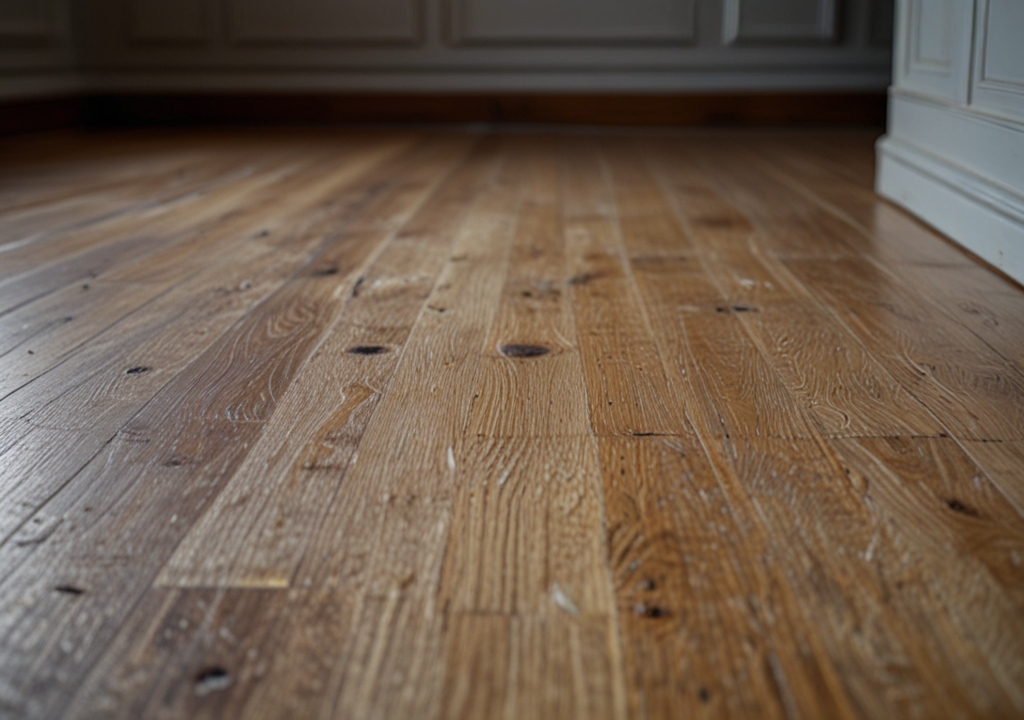
Have you ever spent a considerable amount of time cleaning your floors only to find that they look dusty almost immediately after? This frustrating scenario is common in many households, but understanding why it happens can help you tackle the problem more effectively. Let’s explore the reasons behind perpetually dusty floors and discover some practical solutions to keep them looking clean longer.
The Nature of Dust
Firstly, it’s important to understand what dust actually is. Household dust is a combination of many fine particles, including dead skin cells, dirt brought in from outside, pet dander, textile fibers, and microscopic allergens. Because of its fine and lightweight nature, dust easily becomes airborne and can settle back down quickly after cleaning.
High-Traffic Areas and Floor Types
High-traffic areas naturally accumulate dust faster than less frequented parts of your home. The type of flooring can also affect how much dust is visible. For instance, french oak floors, while beautiful and durable, can show dust more prominently due to their texture and colour variations. Lighter floors tend to display dust and small particles more clearly than darker tones.
Ineffective Cleaning Methods
Sometimes, the cleaning methods and tools we use can contribute to the problem rather than solving it:
- Dry Sweeping: Sweeping with a dry broom can often just push dust around or send it into the air, where it will settle again shortly after.
- Old Vacuum Filters: A vacuum cleaner with a full bag or a clogged filter can reduce suction power and effectiveness, leaving behind more dust than it picks up.
Environmental Factors
Environmental factors play a significant role in how quickly dust accumulates:
- Ventilation: Poor ventilation can increase dust accumulation. Without adequate airflow, dust simply settles back onto surfaces after being disturbed.
- Windows and Doors: Frequently opened windows and doors can allow more outdoor dust and pollen to enter the home, exacerbating the issue.
- Humidity Levels: Low humidity levels can make the air in your home dry, which helps dust stay airborne longer before settling.
Improving Your Cleaning Techniques
To combat dusty floors effectively, consider adjusting your cleaning techniques and routine:
- Use Microfiber Mops: Microfiber mops attract and hold dust particles instead of merely moving them around. They are particularly effective on hard surfaces like wood, laminate, or tile.
- Upgrade Your Vacuum: Use a vacuum cleaner with a HEPA filter to trap finer particles of dust more efficiently. Ensure the vacuum bag or canister is emptied regularly.
- Damp Mopping: Occasionally using a slightly damp mop can help capture more dust and prevent it from becoming airborne again.
Tackling the Source of Dust
Addressing the root causes of dust can significantly reduce its accumulation:
- Declutter: Reducing clutter can minimize dust traps and make it easier to clean surfaces thoroughly.
- Regular Bedding and Upholstery Cleaning: Wash bedding and clean upholstery regularly to reduce dust from fibers and skin flakes.
- Air Purifiers: Consider using an air purifier to filter out dust particles from the air continuously.
Adopting a Regular Cleaning Schedule

Creating a regular cleaning schedule can prevent dust from building up significantly:
- Frequent Light Cleaning: Instead of a thorough clean once a week, try light cleaning more frequently. This can prevent dust from accumulating and becoming a bigger problem.
- Seasonal Deep Cleans: Schedule deep cleans seasonally to address areas that aren’t part of your regular cleaning routine, like under furniture and high shelves.
Consider Your Home’s Air Quality
Improving the air quality in your home can also reduce dust:
- Change HVAC Filters Regularly: Replace or clean the filters in your heating, ventilation, and air conditioning (HVAC) systems as recommended by the manufacturer.
- Use Cooking Vents: Always use a vent when cooking to help capture oil and food particles that can contribute to dust.
External Factors and Preventive Measures
Finally, consider external factors and preventive measures:
- Doormats: Use doormats at all entrances to reduce the amount of dirt and dust brought in from outside.
- Footwear Policy: Implementing a no-shoes policy can significantly reduce the dirt and dust from outdoors that gets tracked inside.
Understanding why your floors always seem dusty even after cleaning can help you choose more effective strategies and tools for keeping your home cleaner. By adjusting your cleaning techniques, addressing environmental factors, and taking preventive measures, you can significantly reduce the amount of dust settling on your floors. This not only makes your home cleaner but also improves indoor air quality, creating a healthier living environment for you and your family. Remember, a little adjustment to your daily routine can make a substantial difference in maintaining the cleanliness and freshness of your home.
Home Improvement
Easy Solutions for Slippery Bathroom Floors
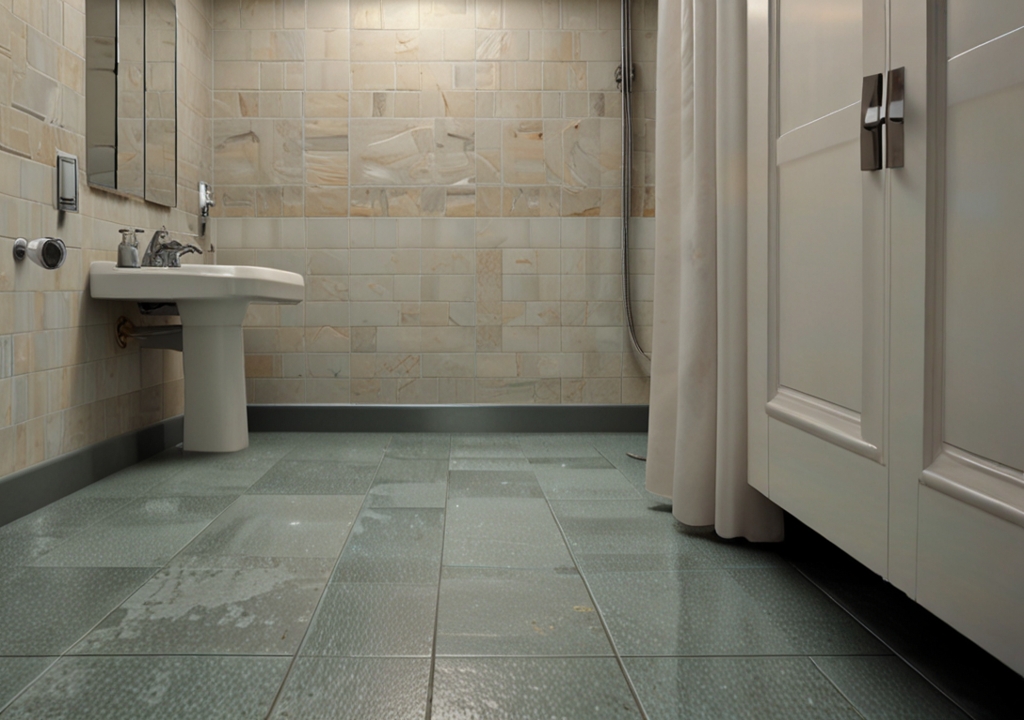
A slippery bathroom floor is a serious safety hazard, increasing the risk of falls and injuries. Whether it’s from water spills, soap residue, or the type of flooring used, taking proactive steps to prevent slipping can make your bathroom a much safer space. Fortunately, there are several simple and effective solutions to reduce the risk of accidents.
If you’re unsure how safe your bathroom flooring is, professional floor slip testing can assess the surface and determine its slip resistance. This can help you make informed decisions about necessary upgrades or treatments.
Why Bathroom Floors Become Slippery
Before finding a solution, it’s important to understand the causes of slippery bathroom floors. Some common reasons include:
- Water accumulation – Standing water from showers, sinks, and spills can make any floor surface dangerous.
- Soap and shampoo residue – These substances can create a thin, slippery layer on tiles.
- Smooth or glossy flooring – Some materials, like polished tiles or marble, have low traction when wet.
- Mold and mildew buildup – A thin layer of mold or algae can form in damp environments, making the floor more slippery.
Addressing these factors can significantly improve safety in your bathroom.
Simple Ways to Prevent Slips in the Bathroom
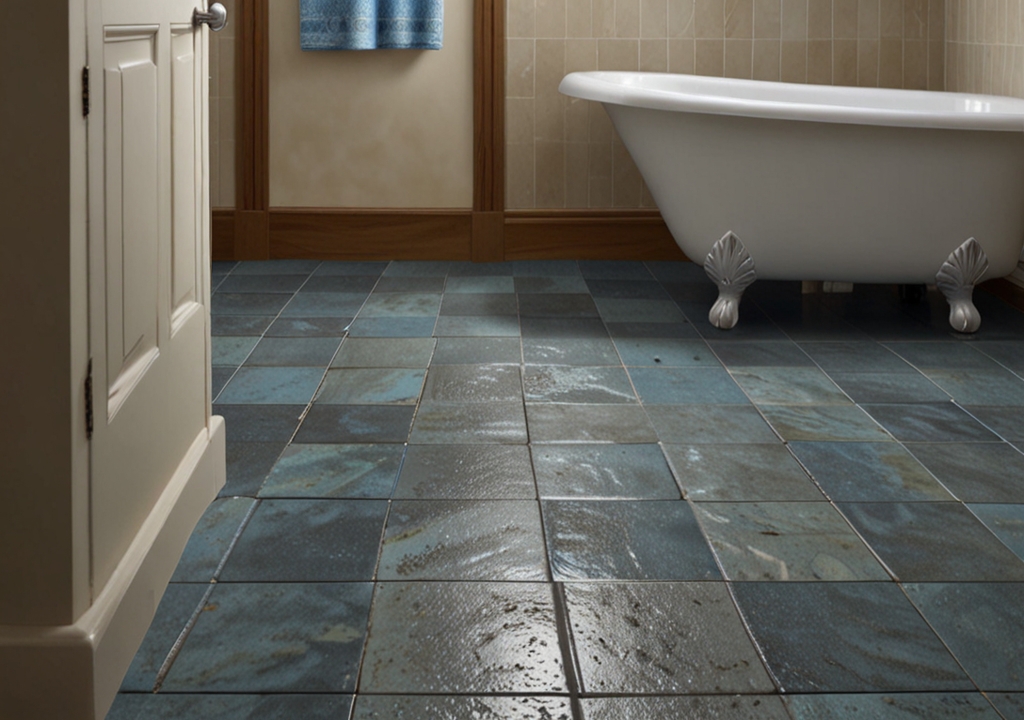
Making your bathroom floor safer doesn’t require a major renovation. There are several cost-effective and easy solutions to reduce slipping hazards.
1. Use Non-Slip Mats and Rugs
Placing non-slip mats in high-risk areas, such as near the sink, bathtub, and shower, can provide extra grip and absorb excess water. Look for mats with rubber backing to keep them firmly in place.
2. Apply an Anti-Slip Coating
Anti-slip treatments or coatings create a textured surface that improves traction on smooth tiles. These solutions are easy to apply and can make a significant difference in reducing slipperiness.
3. Install Grab Bars for Extra Support
Adding grab bars near the shower, toilet, and bathtub provides extra stability, especially for seniors or individuals with mobility issues. They help prevent falls by offering a sturdy surface to hold onto.
4. Choose Slip-Resistant Flooring
If you’re considering a bathroom renovation, opt for flooring materials with natural traction, such as:
- Textured tiles
- Vinyl flooring
- Non-slip ceramic tiles
- Pebble stone flooring
These surfaces provide better grip and are less likely to become dangerously slick when wet.
5. Keep the Floor Dry
Minimizing excess water on the floor is one of the simplest ways to reduce slipping hazards. You can do this by:
- Wiping up spills immediately
- Using absorbent bath mats
- Ensuring proper ventilation to speed up drying
6. Regularly Clean and Maintain the Floor
Dirt, soap scum, and mildew buildup can contribute to slipperiness. To maintain a safer surface:
- Use a non-slip floor cleaner designed to remove residue
- Scrub the floor regularly to prevent buildup
- Avoid wax-based cleaners that can create a slick surface
7. Install Proper Lighting
Poor lighting can make it difficult to see wet areas on the floor. Installing bright, moisture-resistant lighting fixtures ensures better visibility and reduces the likelihood of slipping.
Taking a Proactive Approach to Bathroom Safety
Slippery bathroom floors can pose a significant risk, but implementing these simple solutions can make a big difference in preventing accidents. By making small changes such as using non-slip mats, keeping the floor dry, and choosing the right flooring materials, you can create a safer environment for everyone in your home.
-

 Education4 months ago
Education4 months agoMastering Excel: Your Comprehensive Guide To Spreadsheets And Data Analysis
-

 Business11 months ago
Business11 months agoExploring the Rental Market: Properties for Rent in Malta
-

 Travel8 months ago
Travel8 months agoExperience the Best Desert Safari Dubai Offers!
-

 Tech6 months ago
Tech6 months agoHow To Choose The Best Forex Trading Broker?
-

 How-To Guides11 months ago
How-To Guides11 months agoComprehensive Guide to Cockwarming: Enhancing Intimacy and Connection
-

 Blog4 months ago
Blog4 months agoArab MMA Fighters Shine Bright: Meet the Champions of PFL MENA
-
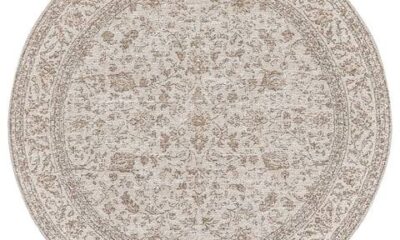
 Home Improvement1 year ago
Home Improvement1 year agoEco-Friendly Round Rug Options for Sustainable Living in NZ
-

 Apps and Games12 months ago
Apps and Games12 months agoDiscover Tickzoo: The Ultimate Platform for Video Content Lovers and Creators







